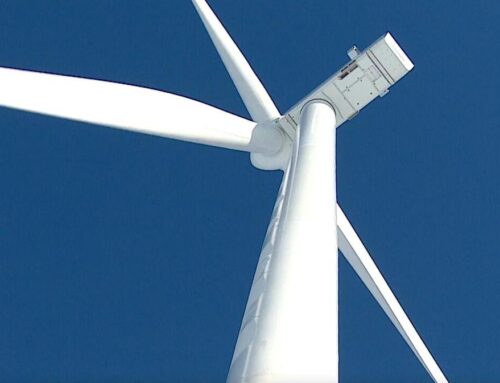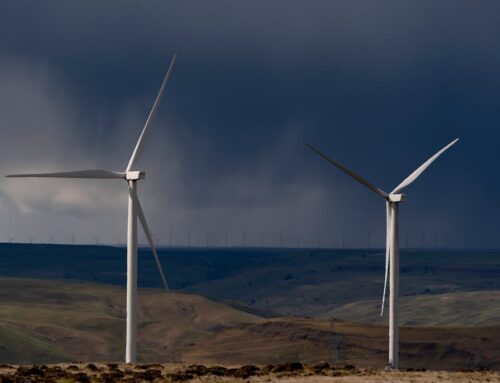Australia and China can power up Southeast Asia’s green energy transition
May 17, 2025
Australia and China share key interests in Southeast Asia in the context of a global green transition and great power rivalry. Through collaboration, both countries can strengthen their ties with Southeast Asian nations, build the foundation for a renewable energy transition in the region and demonstrate their commitment to international stability and multilateralism.
Southeast Asia is one of the world’s fastest growing regions. With surging energy demand and energy transition opportunities, Southeast Asia is emerging as a key destination for renewable energy investment, with China currently the leading investor. ASEAN aims to increase its share of renewable energy to 23 per cent of its energy mix by 2025. In 2023, Brunei, Malaysia and Singapore joined a COP28 effort to triple global renewable capacity by 2030.
From 2019–23, China invested around US$3 billion in renewable energy across ASEAN. For example, the Laos–China 500 kilovolt Interconnection Project enables China to import surplus electricity via a 183.5 kilometre transmission line from Laos. This agreement could also be integrated into the Laos–Thailand–Malaysia–Singapore Power Integration Project, which would launch regional energy connectivity and export hydropower-sourced electricity from Laos to the other signatories.
Australia has also strengthened its economic and green energy ties with ASEAN in recent years. Through the ‘Aus4ASEAN Futures Initiative’, Australia launched a US$4.4 million energy cooperation program and has provided support for the ASEAN Centre for Energy and ASEAN Centre for Climate Change. A flagship project is the SunCable Australia-AsiaPower Link, which will transport solar energy from Australia to Indonesia and Singapore. Australia will also invest US$50 million in equity in the Financing Asia’s Transition Partnership initiative sponsored by Singapore.
Despite geopolitical tensions, Australia and China have shared interests in Southeast Asia’s green energy transition. Given China and Australia have different priorities and are often not direct competitors, energy collaboration would benefit Southeast Asia, boost interstate trust building and risk mitigation and improve Australia–China relations.
China’s renewable energy investments in Southeast Asia — often linked to the Belt and Road Initiative — focus on infrastructure such as hydropower dams and energy grids in countries like Laos, Indonesia and Myanmar. In contrast, Australia’s private sector-led investments target clean energy exports such as solar, green hydrogen and critical minerals to markets like the Philippines, Singapore and Vietnam.
One market pathway for collaboration involving Southeast Asia is electric vehicles (EVs). Larger ASEAN economies like Indonesia, Thailand and Malaysia aim to become regional hubs for battery and EV-related production. China’s leading lithium-ion battery manufacturer Contemporary Amperex Technology Co Limited has invested in Indonesia’s nickel-based supply chain and partnered with Thailand’s Arun Plus on cell-to-pack cooperation. Most ASEAN members have set explicit net-zero goals before or by 2065, making the region a prime destination for EV and battery investments and attracting leading Chinese EV manufacturers.
Australia occupies a special position in the global EV market with rich deposits of lithium, nickel and other vital resources. But most of Australia’s lithium is exported to China. Deepening cooperation with ASEAN countries would not only support Australian trade diversification and global market positionality but also support a more self-reliable and fair supply network of battery raw materials for Southeast Asia. During the 2023 Australia–Indonesia Annual Leaders’ Meeting, former Indonesian president Joko Widodo expressed his desire to import Australian lithium to complement other critical raw materials for battery production, while leveraging Indonesia’s rich nickel resources to establish a fully integrated EV battery supply chain in Southeast Asia.
Given China is a global supplier of EV technologies and infrastructure while Australia supplies critical minerals, China and Australia can form a complementary or mixed — rather than zero-sum — partnership in EV markets, supporting supply chain stability for EV battery production in and for Southeast Asia.
Chinese and Australian companies have already experimented with partnerships and joint ventures to develop and process critical minerals for EV battery production. Under the Regional Comprehensive Economic Partnership Framework, trade liberalisation could boost Australia’s lithium exports to Indonesia and promote joint development of lithium processing in Thailand by Chinese and Australian companies, advancing an integrated regional green supply chain.
Another opportunity for Australia–China energy cooperation in Southeast Asia involves emerging renewables like hydrogen. Australia has immense potential in renewable hydrogen production and is developing the largest hydrogen project pipeline in the world. China is a global leader in research and development of green hydrogen technology. In 2023, the two countries established collaboration in hydrogen energy industries. At the same time, Southeast Asia’s hydrogen demand has steadily increased since 2015, reaching approximately 3.2 million tonnes per year on average.
Policy and institutional coordination are essential for effective renewable energy collaboration. In June 2024, Australia and China signed a Memorandum of Understanding on Climate Change Cooperation. Meanwhile, the Melbourne Declaration adopted in March 2024 led to a cooperation arrangement between Australia and the ASEAN Centre for Energy. ASEAN and China also reaffirmed their commitment to deepening energy transition collaboration in August 2023 and established theASEAN–China Clean Energy Cooperation Centre.
These initiatives can serve as stepping stones for China, Australia and ASEAN to further coordinate long-term interests. Trilateral cooperation with Southeast Asia can provide insights for China and Australia to explore similar partnership-building in other regions. But the key question remains whether Beijing and Canberra will seize the opportunities in green energy markets to move beyond unilateralism and cultivate long-term multilateral partnerships, which — if successful — could generate profound global benefits.
Yunkang Liu is PhD candidate in Politics and International Relations at the School of Social Sciences, the University of New South Wales, Sydney.
Fengshi Wu is Associate Professor in Political Science and International Relations at the School of Social Sciences, the University of New South Wales, Sydney.
https://doi.org/10.59425/eabc.1747519200
Search
RECENT PRESS RELEASES
Related Post


